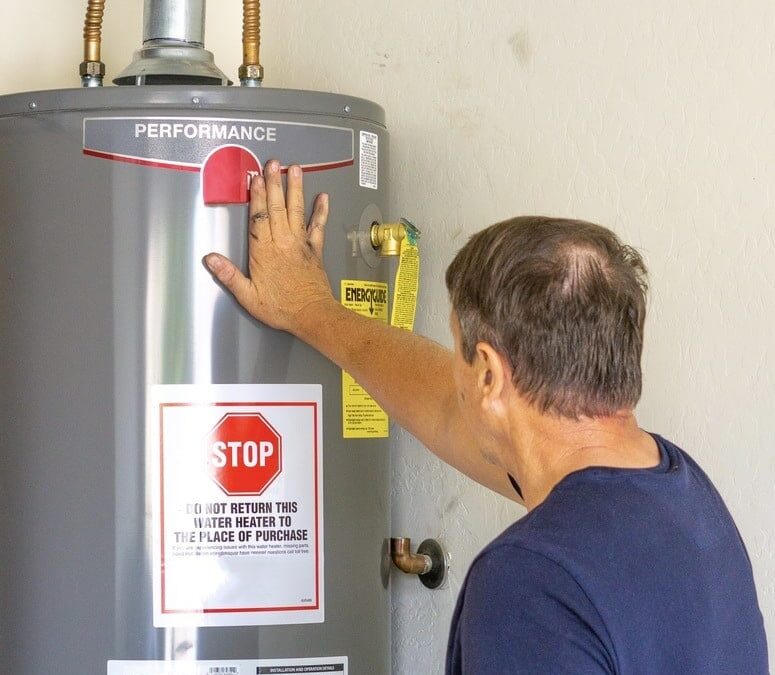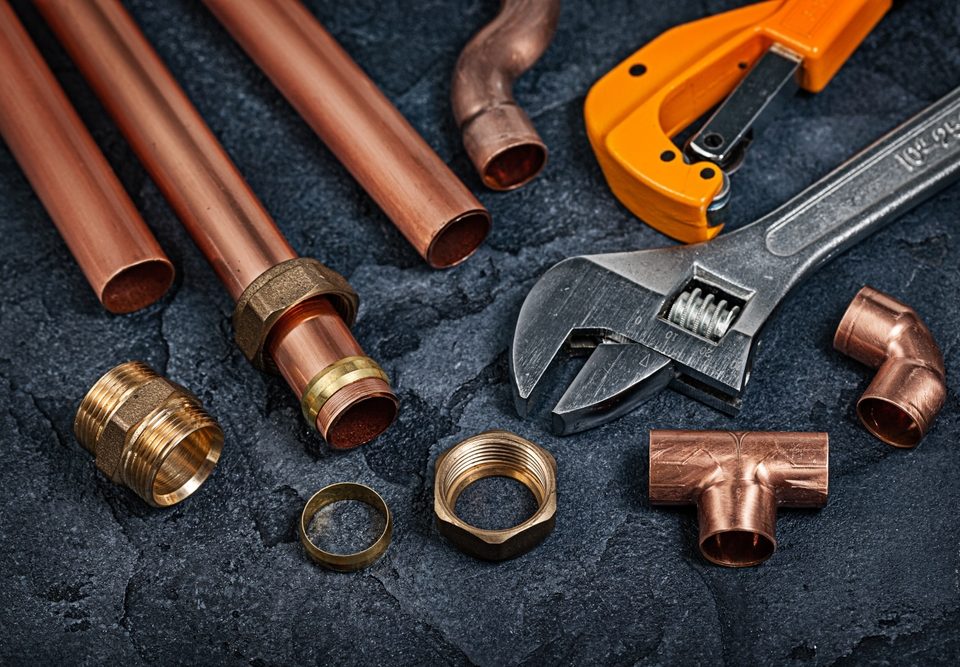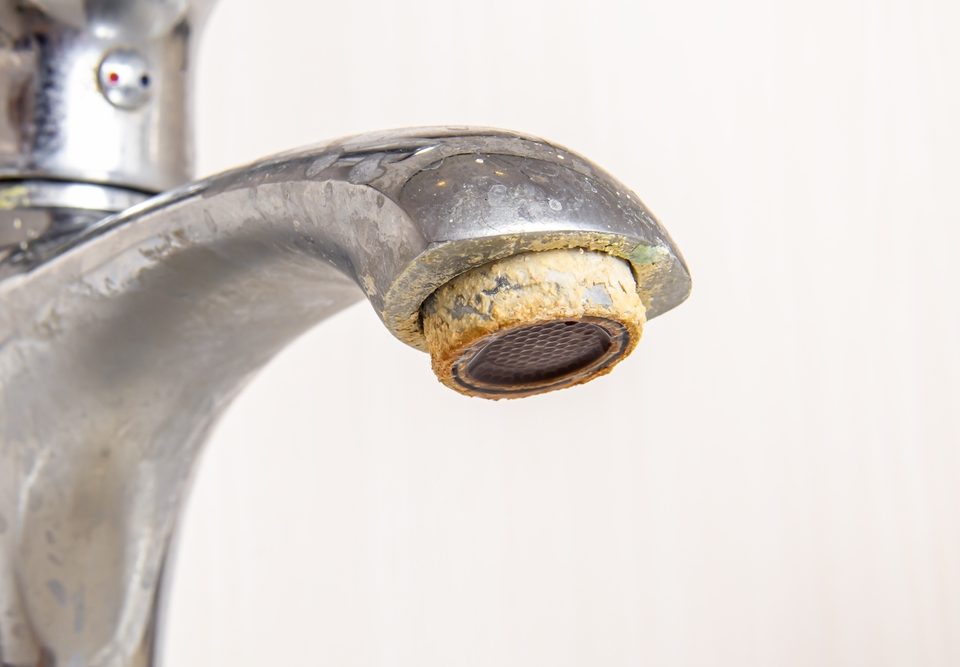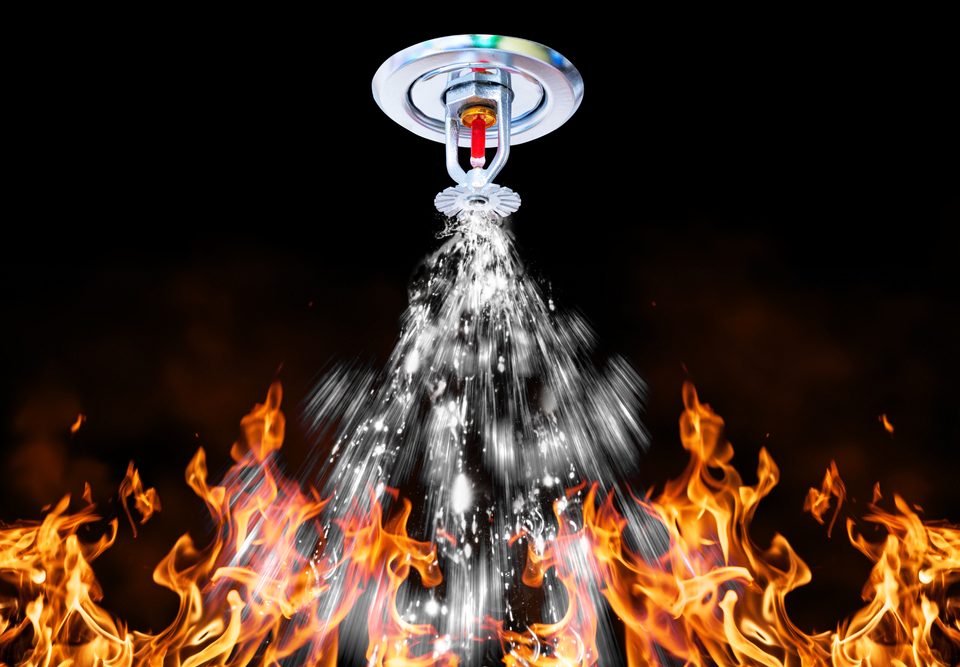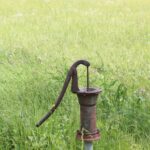
Protecting Well Pumps: Keeping Ants Out of Well Pump Contacts.
October 2, 2023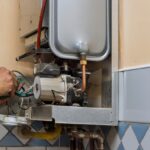
Making the Most of Your Water Heater: How Long Can You Shower with a 40-Gallon Water Heater?
November 9, 2023Water heaters are essential for providing hot water in our homes, but have you ever wondered why your hot water heater may not be draining properly? Here, we will delve into the basics of water heaters and explore the common reasons behind drainage issues.
One possible reason for a hot water heater not draining is a clogged drain valve. Over time, sediment and debris can accumulate in the valve, obstructing the flow of water. To address this issue, it is recommended to flush your water heater regularly to remove any buildup. This can be done by attaching a garden hose to the drain valve and allowing the water to run until it runs clear.
Another common cause of drainage problems is a malfunctioning heating element. If one or both elements fail to heat the water adequately, it can lead to sediment buildup and reduced efficiency. In such cases, it may be necessary to replace the faulty elements to restore proper functioning.
Additionally, an incorrectly installed or sized drain line can also contribute to poor drainage. If the pipe is too small or improperly sloped, it can impede the flow of water and cause backups. Ensuring that your drain line meets the required specifications can help prevent these issues.
To improve drainage and prolong the lifespan of your hot water heater, here are a few suggestions:
- Regular maintenance: Flushing your water heater at least once a year can help remove sediment and prevent clogs.
- Temperature adjustment: Setting your water heater temperature between 120-140 degrees Fahrenheit can help reduce mineral buildup.
- Pressure relief valve inspection: Checking your pressure relief valve annually ensures its proper functioning and prevents leaks.
- Professional inspection: Engaging a licensed plumber for periodic inspections can identify potential issues early on and save you from costly repairs.
By following these suggestions, you can maintain a well-functioning hot water heater that provides you with ample amounts of hot water when needed. Remember that proper care and maintenance play a significant role in the longevity and efficiency of your water heating system.
Understanding Hot Water Heater Drainage Issues
To understand hot water heater drainage issues, delve into the causes of a hot water heater not draining and recognize common signs of a draining problem. This section explains the solutions for addressing these sub-sections, which will provide insights into why your hot water heater may be experiencing drainage difficulties.
Causes of Hot Water Heater Not Draining
If your hot water heater is not draining, there are a few possible reasons causing this issue. Understanding these causes can help you troubleshoot the problem and find a solution.
Here is a 3-step guide to identifying the causes of your hot water heater not draining:
- Clogged Drain Valve: Check if the drain valve is clogged with sediment or debris. This can restrict the flow of water and prevent proper drainage. To fix this, you can try flushing out the system or replacing the drain valve altogether.
- Faulty Dip Tube: The dip tube is responsible for directing incoming cold water to the bottom of the tank. If it breaks or becomes damaged, it can lead to poor circulation and inadequate drainage. Consider replacing the dip tube if necessary.
- Sediment Accumulation: Over time, minerals and sediment can build up at the bottom of the tank, reducing its capacity and obstructing drainage. Flushing your hot water heater regularly helps prevent this issue by removing accumulated debris.
In addition to these common causes, it’s essential to mention that issues with improper installation, faulty plumbing connections, or a malfunctioning pressure relief valve can also affect the drainage of your hot water heater.
Pro Tip: Regular maintenance such as flushing your hot water heater annually can help prevent drainage issues by keeping your system free from sediment buildup and ensuring optimal operation.
Common Signs of a Draining Problem
A hot water heater drainage issue can be identified through various signs.
- If you notice a decrease in the water temperature despite setting it at a higher level, this could indicate a draining problem.
- If there is an unusual noise coming from the heater, it could be due to inadequate drainage.
- Moreover, if you find rust-colored water flowing from the faucet, it might be because of sediment build-up caused by poor drainage.
- Additionally, a foul odor emanating from the hot water could suggest bacterial growth due to stagnant water caused by improper drainage.
- Lastly, if your heater takes longer than usual to refill and reheat after usage, this may be another sign of a draining problem.
Bursting Creativity: The History You Didn’t Know…
Little did you know that back in 1925, when hot water heaters were still relatively new appliances on the market, homeowners used to rely on guesswork rather than clear signs to detect draining problems! They would often resort to shaking or tapping their heaters in hopes of identifying any possible issues. It wasn’t until later years that plumbing experts developed more specific diagnostic methods based on tangible signs mentioned above. So next time you diagnose a draining problem in your hot water heater with ease using these signs and think about how far we’ve come!
Steps to Troubleshoot a Hot Water Heater that is Not Draining
To troubleshoot a hot water heater that is not draining, start by turning off the power and water supply. Then, check the drain valve, flush the hot water heater, and inspect the pressure relief valve. Each sub-section in this guide provides a solution to address the issue and restore the proper drainage of your water heater.
Turn Off the Power and Water Supply
Turning off the power and water supply is an essential step when troubleshooting a hot water heater that is not draining. Without cutting off these sources, you run the risk of electrocution and further damage to the unit.
To safely turn off the power and water supply to your hot water heater, follow these steps:
- Ensure your safety by wearing rubber gloves and protective eyewear.
- Locate the circuit breaker box in your home and flip the switch labeled for your hot water heater to the “off” position.
- If you have a gas-powered hot water heater, locate the gas control valve near the bottom of the unit and turn it clockwise until it is fully closed.
- Shut off the cold water supply valve located at the top of your hot water heater by turning it clockwise until it stops.
- Open a nearby faucet on cold mode to alleviate pressure within the tank.
- Double-check that both the power and water supplies are completely shut off before proceeding with any further troubleshooting steps.
In addition to these vital steps, it’s important to remember that turning off both the power and water supply will prevent any accidents from occurring while inspecting or repairing your hot water heater.
It’s worth noting that according to a study conducted by The National Association of Home Builders, approximately 75% of all hot water heaters last between eight and twelve years before needing replacement.
Check the Drain Valve
The drain valve is a critical component of your hot water heater, and it’s important to ensure that it is functioning properly. Here are the steps to check the drain valve:
- Locate the drain valve: The drain valve is typically located near the bottom of the hot water heater. It may be a faucet-like lever or a simple screw-type valve.
- Turn off the power: Before checking the drain valve, it is essential to turn off the power supply to the hot water heater. This will prevent any accidents or injuries while performing maintenance.
- Open the drain valve: Using a wrench or a pair of pliers, carefully turn the valve counterclockwise to open it. Position a bucket or a large container beneath the valve to catch any water that may flow out.
Checking the drain valve allows you to inspect for any clogs, debris, or leaks that may be affecting your hot water heater’s drainage efficiency. By ensuring that this crucial component is in good working condition, you can prevent further issues with your unit.
In addition to checking the drain valve itself, it is also important to inspect its surroundings for any signs of damage or wear. Look for rusting pipes, loose fittings, or damp spots that could indicate leaks or potential problems.
One homeowner experienced an issue with their hot water heater not draining properly. After following these steps and inspecting their drain valve, they discovered a small blockage caused by sediment buildup. By flushing out the tank and cleaning the drain valve thoroughly, they were able to restore proper drainage and avoid more extensive repairs.
Flush the Hot Water Heater
Flushing the hot water heater is an essential step in troubleshooting a draining issue. By performing this task, you can remove sediment buildup, which can hinder the draining process.
To flush your hot water heater, follow these four steps:
- Turn off the power: Before beginning any maintenance work, it is crucial to ensure your safety. Turn off the power supply to your hot water heater by switching off the breaker in your electrical panel.
- Connect a garden hose: Locate the drain valve at the bottom of your hot water heater and attach a garden hose securely to it. Make sure that the other end of the hose is directed towards a suitable drainage area.
- Open the drain valve: With caution, slowly open the drain valve by turning counterclockwise. This step allows sediment and debris to flow out of the tank through the attached hose.
- Flush and inspect: Allow cold water to enter through your heater’s inlet valve while keeping the drain valve open. Continue flushing until clear water flows out from the hose without any signs of sediment or debris.
- Schedule regular flushing: Flushing your hot water heater at least once a year can prevent sediment buildup and maintain its optimal performance.
- Adjust temperature settings: Lowering your hot water heater’s temperature can minimize sediment accumulation and prolong its lifespan.
- Install a sediment filter: An additional layer of protection can be achieved by installing a sediment filter on your hot water lines before they reach the tank.
- Seek professional assistance: If you encounter any difficulties or are unsure about how to perform proper maintenance, contacting a qualified plumber will ensure accurate troubleshooting and prevent potential damage.
By following these steps and suggestions, you can successfully troubleshoot draining issues with your hot water heater while promoting its longevity and efficiency.
Inspect the Pressure Relief Valve
The pressure relief valve of a hot water heater should be inspected to ensure proper functioning and prevent potential issues such as leaks or excessive pressure build-up. Here’s a step-by-step guide on how to inspect the pressure relief valve:
- Start by turning off the power supply to the water heater. This can typically be done by flipping the corresponding circuit breaker in your electrical panel.
- Locate the pressure relief valve, which is usually located on the top or side of the water heater. It is often connected to a discharge pipe that extends downwards.
- Carefully examine the valve for any signs of damage, such as corrosion, leaks, or debris accumulation. If you notice any problems, it may be necessary to replace the valve.
- To test the pressure relief valve, place a bucket underneath it to catch any water that may be discharged during testing. Lift up on the valve’s lever briefly and then release it back into its original position. This should simulate a quick release of pressure.
- As you lift and release the lever, listen for any unusual sounds like hissing or leaking noises and observe whether water flows freely into the bucket without obstruction.
To ensure ongoing functionality and safety, it is recommended to perform this inspection at least once a year or as per manufacturer guidelines.
It’s worth noting that routinely inspecting and maintaining your hot water heater can help extend its lifespan and minimize costly repairs or replacements in the future.
When to Call a Professional
When faced with a stubbornly non-draining water heater, it’s time to call in the professionals. Trying to troubleshoot and fix the issue yourself can lead to further complications and potential damage. Trusting a professional plumber ensures that the problem will be correctly diagnosed and repaired, saving you time, money, and frustration.
Water heater systems can be complex, with various components that require expertise for proper repairs. Professional plumbers have the knowledge and experience to identify the underlying cause of a non-draining water heater. They understand how each part works together and can diagnose issues such as sediment buildup or a faulty drain valve.
Not only do professionals possess technical know-how, but they also have the necessary tools and equipment to tackle water heater problems effectively. These tools are specifically designed for plumbing tasks and make it easier to safely access hard-to-reach areas of the system. By relying on professionals, you can be confident that your water heater will receive thorough inspection and repair.
Calling on a professional is not just about fixing immediate concerns; it is an investment in preventing future issues. Regular maintenance by a plumber ensures that your hot water heater operates efficiently for years to come. By addressing potential problems early, professionals can extend the lifespan of your unit while reducing the risk of sudden breakdowns or costly repairs down the line.
So why take chances with your water heater when you can rely on experts who specialize in its care? Calling a professional plumber for help when your hot water heater isn’t draining is the smartest decision you can make. Their expertise, tools, and preventive maintenance approach will keep your system running smoothly without any hassle or worries.
Conclusion
As we wrap up our exploration of water heaters, it is clear that a non-draining hot water heater can be a frustrating issue for homeowners. However, understanding the potential causes and solutions can help ensure a continuous supply of hot water in your home.
When it comes to a hot water heater not draining, there are several factors that can contribute to this issue. One possible cause is sediment buildup at the bottom of the tank. Over time, minerals and debris can accumulate and prevent proper drainage. Flushing the tank regularly can help prevent this buildup and ensure optimal performance.
Another common culprit for a non-draining hot water heater is a faulty drain valve. If the valve is damaged or not functioning properly, it may impede or block the flow of water during the draining process. In such cases, replacing the faulty valve can resolve the issue and restore proper drainage.
Additionally, inadequate slope or improper installation of drain pipes can also hinder effective drainage. If the pipes are not properly angled or if there are any obstructions in their path, it can impede the flow of water out of the tank. Ensuring proper pipe installation and maintenance can help alleviate this problem.
To address these issues and ensure a draining hot water heater, here are some suggestions:
- Regularly flush your hot water heater to remove sediment buildup. This can be done by attaching a hose to the drain valve at the bottom of the tank and allowing cold water to flow into it until clear water emerges from the hose.
- Inspect and replace faulty drain valves as needed. A malfunctioning valve can hinder drainage, so make sure to have it checked by a professional if you suspect any issues.
- Ensure proper slope and installation of drain pipes. If there are any concerns about pipe angling or obstructions, consult with a plumber to address these issues.
By implementing these suggestions, you can effectively maintain your hot water heater’s draining capability and enjoy a continuous supply of hot water in your home. Remember, regular maintenance and prompt attention to any issues can help prolong the lifespan of your water heater and ensure optimal performance.

